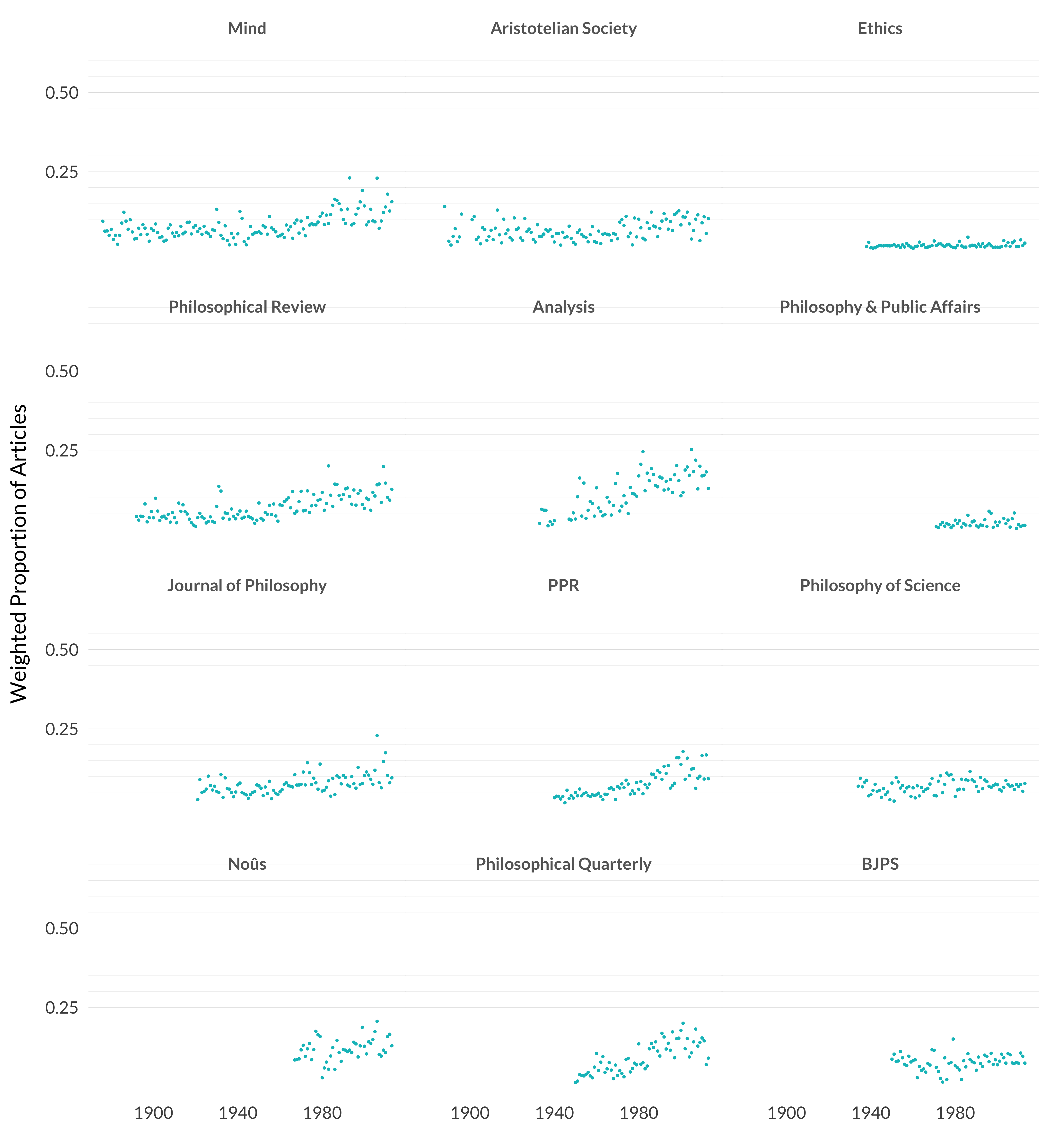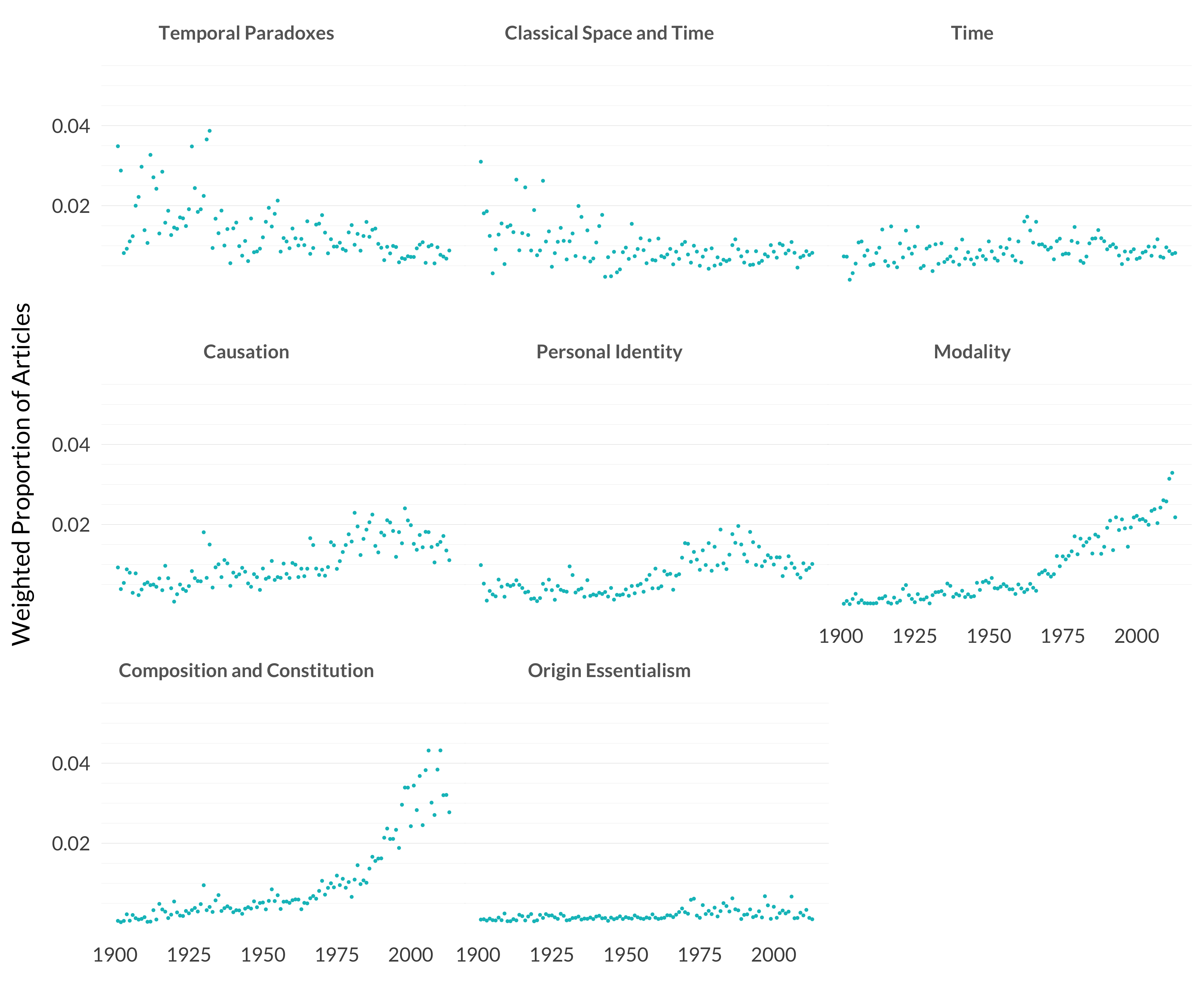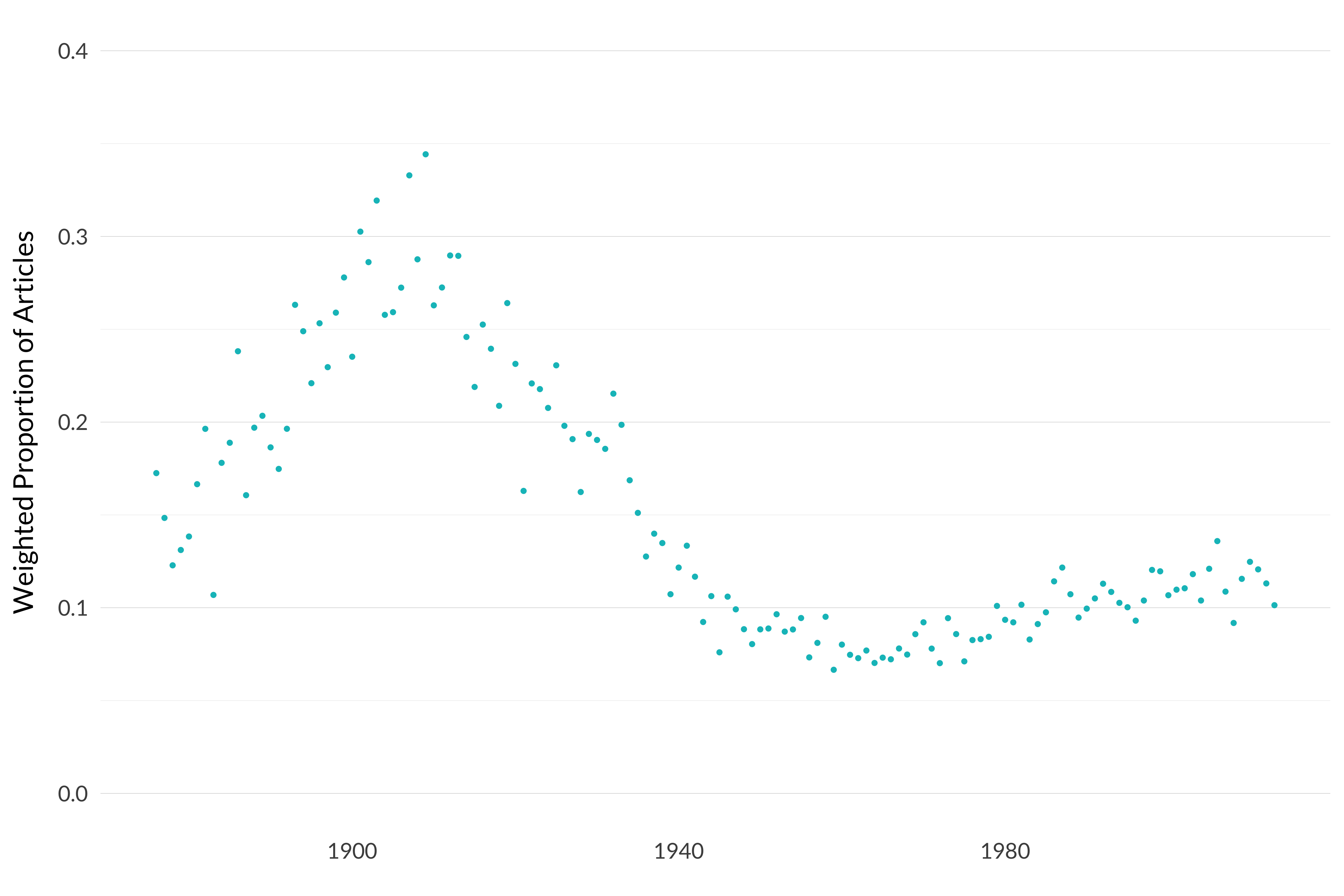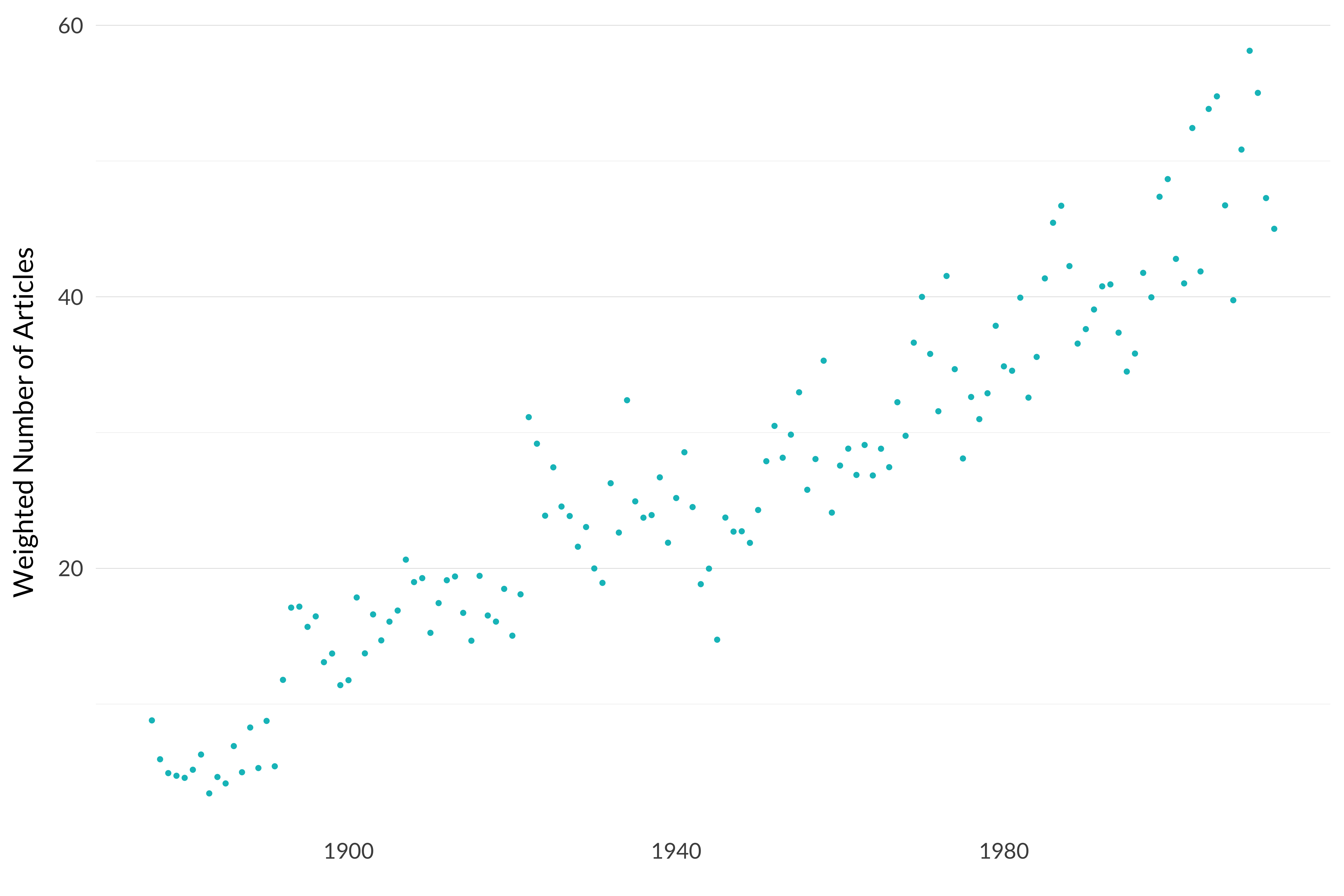4.6 Metaphysics

Figure 4.14: Proportion of each journal’s yearly publications in Metaphysics
The short version is that metaphysics is at worst flat in every journal, and rising rapidly in Analysis, Philosophical Quarterly and Philosophy and Phenomenological Research. That’s fine, but shouldn’t we see positivism showing up somewhere that put downward pressure on metaphysics at least somewhere? If that happens, it isn’t visible in the journal-level data. What happens at the topic-level?

Figure 4.15: Topics in Metaphysics
So there are two big topics—modality, and composition and constitution-that only take off after positivism goes away. The same is probably true of causation as well, but it’s much smaller. I was surprised that causation was so much smaller than the other very modern categories; maybe that’s in part because some of the causation work ended up getting classified as philosophy of science.
But we still haven’t answered the question about where positivism shows up. I thought that the graph here would be U-shaped, with lots of metaphysics on either side of a positivism-driven dip in the middle. We can recreate that gap if we declare that all the work in idealism is really metaphysics.

Figure 4.16: Proportion of each year’s articles that are in idealism or metaphysics.
That’s more like what I expected, though the postpositivism rise is much smaller than the prepositivism fall. It obviously looks different if using counts rather than proportions.

Figure 4.17: Weighted number of each year’s articles that are in idealism or metaphysics.
And now we’re back to a steady rise, with no obvious place to locate the rise of positivism.
I think the big story here is that positivism has much less impact on the journals thanoneyou might think from the standard story about the history of twentieth century philosophy. If positivists are given credit for killing idealism, then positivism has an enormous influence. But I’m not sure what the case is for that. It’s not like Moore was a card-carrying positivist, and he surely had something to do with the downfall of idealism.
Anyway, let’s keep track of this when looking at subsequent topics, because it would be very surprising to see no impact from positivism on the literature.